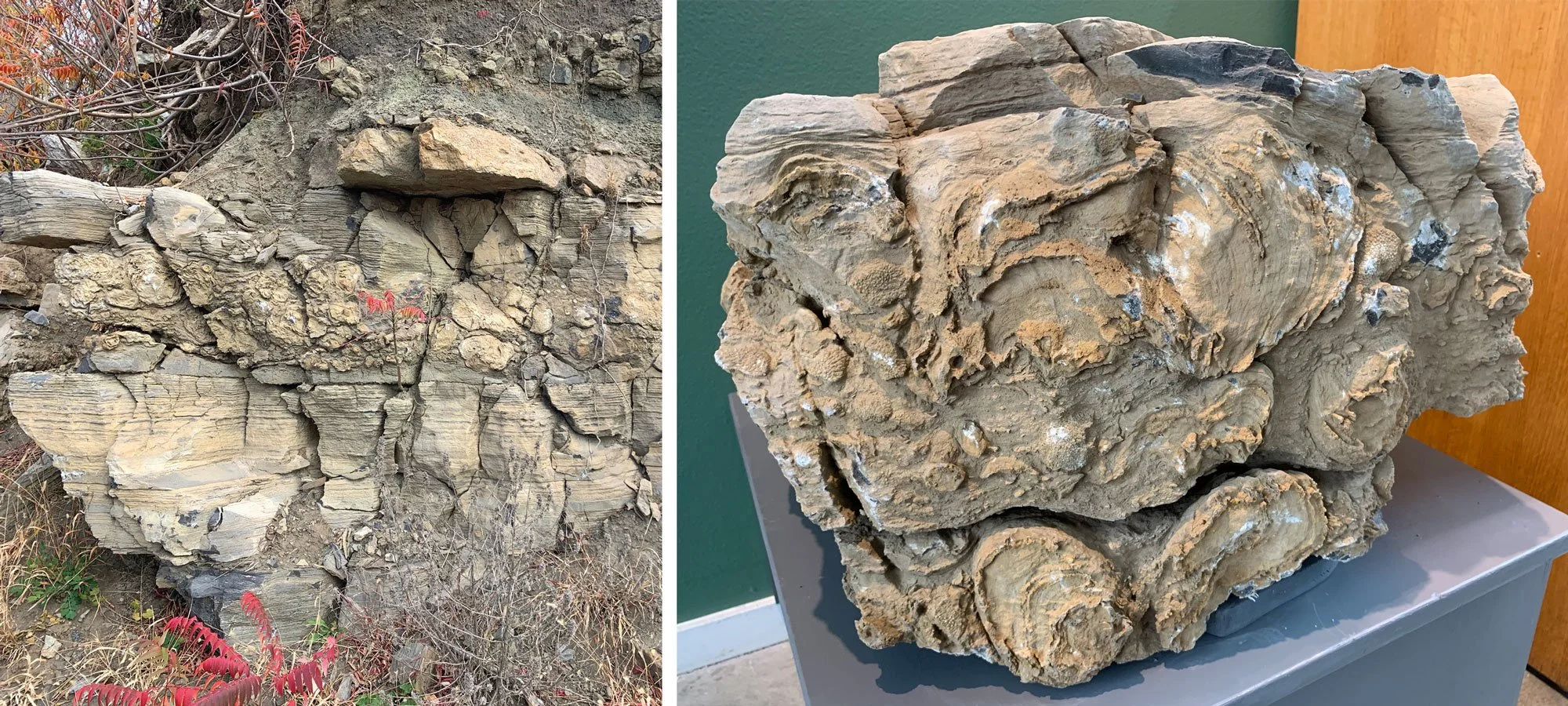Sponges
Sponges
Sponges, which belong to the phylum Porifera, are the simplest animals. They lack nervous and digestive systems and filter particles of food from the water that flows through their porous bodies. While the natural sponges that were traditionally used by people for bathing are soft, many sponges have mineralized skeletons and you would not want to wash yourself with them! Some modern sponges make their skeletons out of silica, which is the same composition as glass. Such “glass sponges” also have a fossil record and rare specimens are sometimes encountered in Devonian rocks in New York State.
Sponge Reef
This block of limestone was part of a fossil reef made of sponges, preserved in a quarry near Syracuse, New York. The cabbage head-shaped masses are sponges called stromatoporoids that built layered skeletons of calcium carbonate. Stromatoporoids were important reef-building organisms in seas around the world during the Devonian Period.
Stromatoporoid sponges, Lower Devonian Manlius Formation (Jamesville Member), Heidelberg Materials Jamesville Quarry, Onondaga County, New York. Left: Field view of stromatoporoid reef (photograph by Warren D. Allmon). Right: Specimen from quarry on display in the Museum of the Earth.


